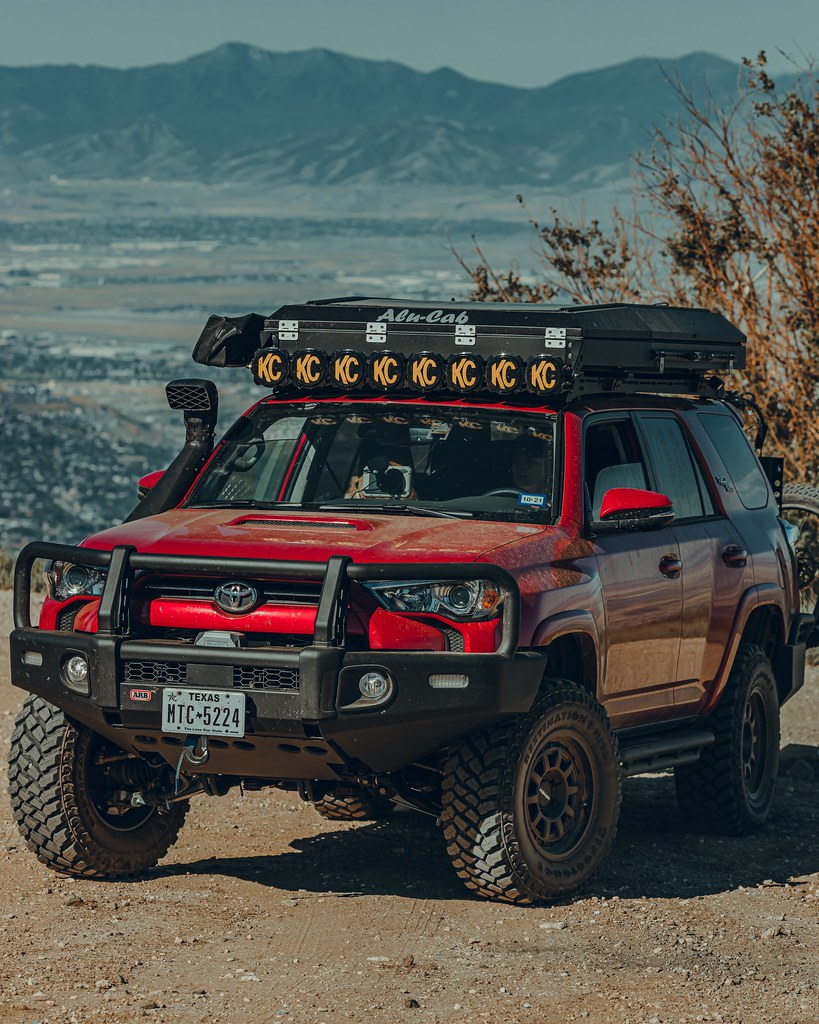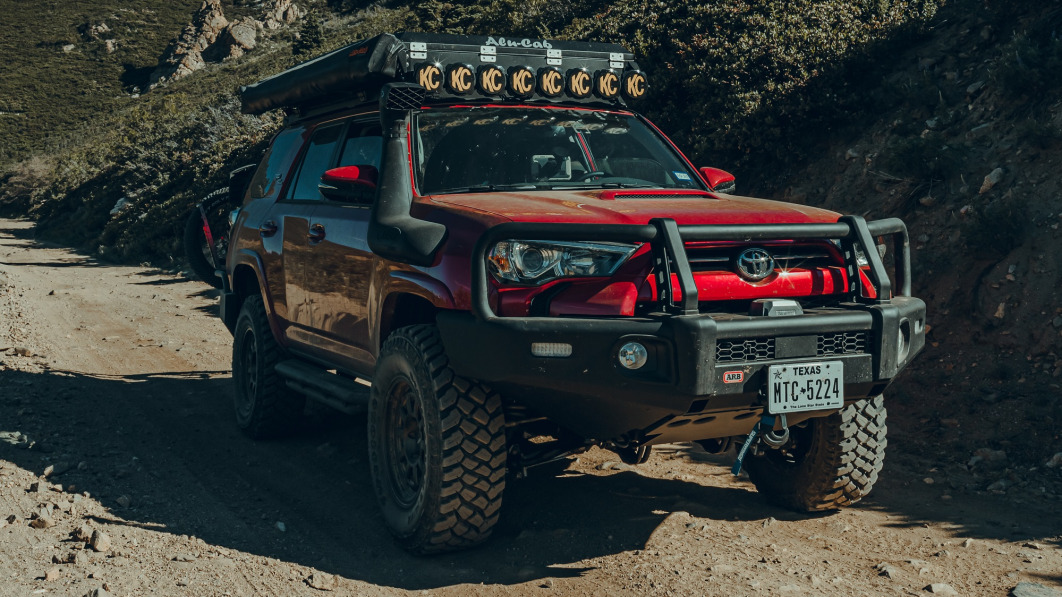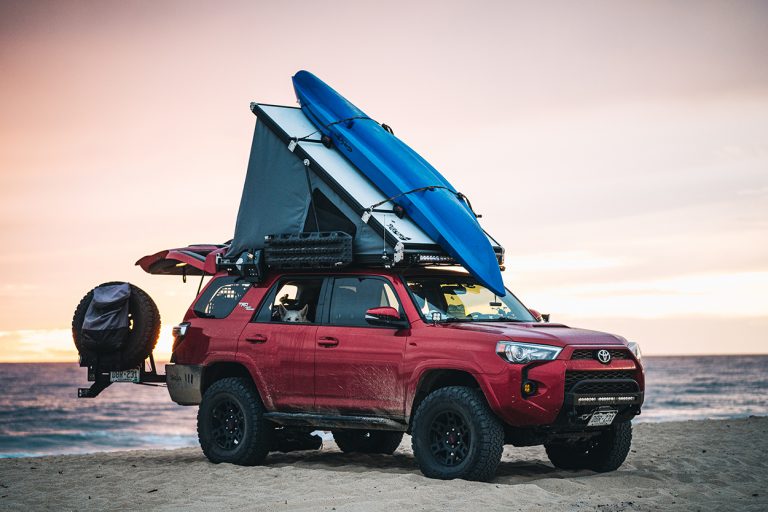The Toyota 4Runner: A Canvas For Adventure – Building The Ultimate Overland Rig
The Toyota 4Runner: A Canvas for Adventure – Building the Ultimate Overland Rig
Related Articles: The Toyota 4Runner: A Canvas for Adventure – Building the Ultimate Overland Rig
Introduction
With great pleasure, we will explore the intriguing topic related to The Toyota 4Runner: A Canvas for Adventure – Building the Ultimate Overland Rig. Let’s weave interesting information and offer fresh perspectives to the readers.
Table of Content
The Toyota 4Runner: A Canvas for Adventure – Building the Ultimate Overland Rig

The Toyota 4Runner, a name synonymous with rugged reliability and off-road capability, has long captivated adventurers and outdoor enthusiasts. Its enduring legacy, coupled with its inherent strength and versatility, makes it an ideal platform for transforming into a formidable overland vehicle. This article delves into the intricacies of building a Toyota 4Runner into a capable overland rig, highlighting the key components, considerations, and benefits of this transformation.
Understanding the 4Runner’s Strengths
The 4Runner’s inherent strengths lay the foundation for a successful overland build. Its body-on-frame construction provides exceptional durability and rigidity, capable of handling the rigors of off-road travel. The 4Runner’s solid axles, coupled with its available locking differentials, provide excellent traction and articulation, allowing it to navigate challenging terrain with ease. Moreover, the 4Runner’s spacious interior, ample cargo capacity, and comfortable ride make it a practical choice for extended journeys.
Key Components of an Overland Build
Transforming a 4Runner into an overland rig involves a strategic selection and integration of components that enhance its capability and comfort. These include:
- Suspension and Tires: Upgrading the suspension system is paramount for improved ground clearance, articulation, and ride quality. This typically involves installing a lift kit, often paired with larger, more aggressive tires designed for off-road use.
- Powertrain Modifications: While the 4Runner’s stock engine is capable, some upgrades can enhance its performance for demanding off-road situations. This may include a remap, exhaust system modifications, or even a supercharger for increased power output.
- Armor and Protection: Protecting the vehicle from the hazards of off-road travel is essential. This involves installing skid plates to safeguard the undercarriage, rock sliders for side protection, and a winch for self-recovery in challenging situations.
- Camping and Living Essentials: Overland travel necessitates a comfortable and functional living space. This includes a roof top tent, a fridge/freezer, a portable stove, and other amenities for self-sufficiency.
- Electronics and Navigation: Modern overland rigs benefit from advanced technology. This includes a GPS system, satellite communication devices, and a robust power system to ensure reliable operation of electronics.
Navigating the Build Process: Considerations and Challenges
Building an overland rig requires careful planning and consideration. Key factors to address include:
- Budget: Overland builds can range from modest to extravagant, depending on the desired level of customization. Defining a budget early on helps guide component selection and ensure a manageable build process.
- Skill Level: While many aspects of an overland build can be handled by a novice, some tasks require specialized skills or professional assistance. Understanding your own mechanical capabilities is essential to determine what can be done independently and what requires professional help.
- Vehicle Selection: Choosing the right 4Runner model is crucial. Factors to consider include the year of manufacture, engine options, and available features.
- Research and Planning: Thorough research is essential for selecting the right components and ensuring they are compatible with the 4Runner. Planning the build process, including the sequence of modifications, helps streamline the process and avoid costly mistakes.
The Benefits of an Overland 4Runner
The rewards of building a 4Runner into an overland rig are multifaceted:
- Unparalleled Freedom: An overland rig empowers you to explore remote and off-grid destinations, escaping the confines of conventional travel routes.
- Immersive Exploration: The 4Runner’s capabilities allow you to experience nature in its raw form, accessing hidden trails and secluded campsites.
- Self-Reliance: An overland rig provides the tools and resources for self-sufficiency, allowing you to navigate remote areas with confidence.
- Adventure and Connection: Overland travel fosters a sense of adventure, allowing you to connect with nature and forge lasting memories.
Frequently Asked Questions
Q: What is the average cost of building an overland 4Runner?
A: The cost of an overland build varies widely depending on the scope of modifications and the quality of components. A basic build can start around $5,000, while a fully equipped rig can easily exceed $20,000.
Q: What are the essential modifications for an overland 4Runner?
A: Essential modifications include a lift kit, larger tires, skid plates, a roof top tent, and a reliable power system.
Q: How much ground clearance do I need for an overland 4Runner?
A: A minimum of 10 inches of ground clearance is recommended for most off-road situations. However, more demanding terrain may require even greater clearance.
Q: What are the best tires for an overland 4Runner?
A: All-terrain tires offer a balance of on-road comfort and off-road traction. More aggressive mud-terrain tires provide superior grip in challenging conditions.
Q: Can I build an overland 4Runner myself?
A: Many aspects of an overland build can be handled by a novice with basic mechanical skills. However, some tasks, such as suspension work and electrical modifications, may require professional assistance.
Tips for Building an Overland 4Runner
- Start with a solid foundation: Choose a 4Runner with low mileage and a clean history.
- Prioritize safety: Install essential safety equipment such as skid plates, rock sliders, and a winch.
- Choose quality components: Invest in durable and reliable components that will withstand the rigors of off-road travel.
- Plan for maintenance: Regular maintenance is crucial for ensuring the longevity and reliability of your overland rig.
- Consider your needs: Customize your build to suit your specific travel style and destinations.
Conclusion
Building a Toyota 4Runner into an overland rig is a rewarding journey that transforms a capable vehicle into a versatile and durable companion for adventure. By carefully selecting components, prioritizing safety, and investing in quality, you can create a truly remarkable rig that will empower you to explore the world’s hidden gems and forge unforgettable memories. The 4Runner, with its inherent strength and adaptability, provides the canvas, while your passion for exploration sets the direction. The adventure awaits.








Closure
Thus, we hope this article has provided valuable insights into The Toyota 4Runner: A Canvas for Adventure – Building the Ultimate Overland Rig. We thank you for taking the time to read this article. See you in our next article!
You may also like
Recent Posts
- The 2025 Toyota 4Runner: A Legacy Reimagined
- The Enduring Appeal Of The Toyota 4Runner Manual Transmission 4×4
- The Toyota 4Runner TRD Off-Road: A Legacy Of Adventure, Reimagined For 2025
- The Anticipation Builds: Unveiling The Next Generation Toyota 4Runner
- The 2025 Toyota 4Runner TRD: A Legacy Of Adventure Reimagined
- The Future Of Color: Exploring The Significance Of Color Trends
- The Toyota 4Runner: A Legacy Of Capability, Now With Expanded Seating
- The Toyota 4Runner Timing Belt: A Vital Component For Engine Longevity
Leave a Reply